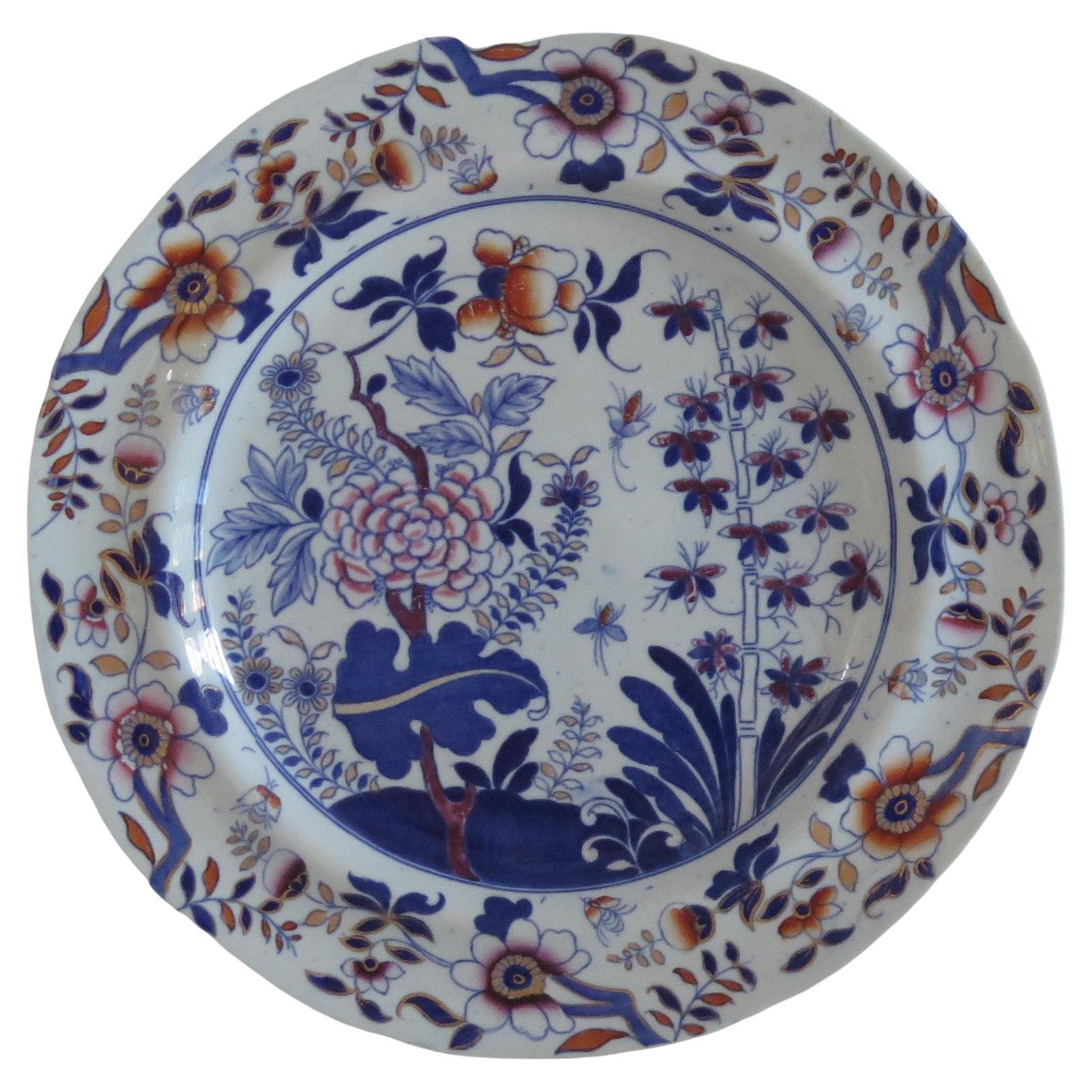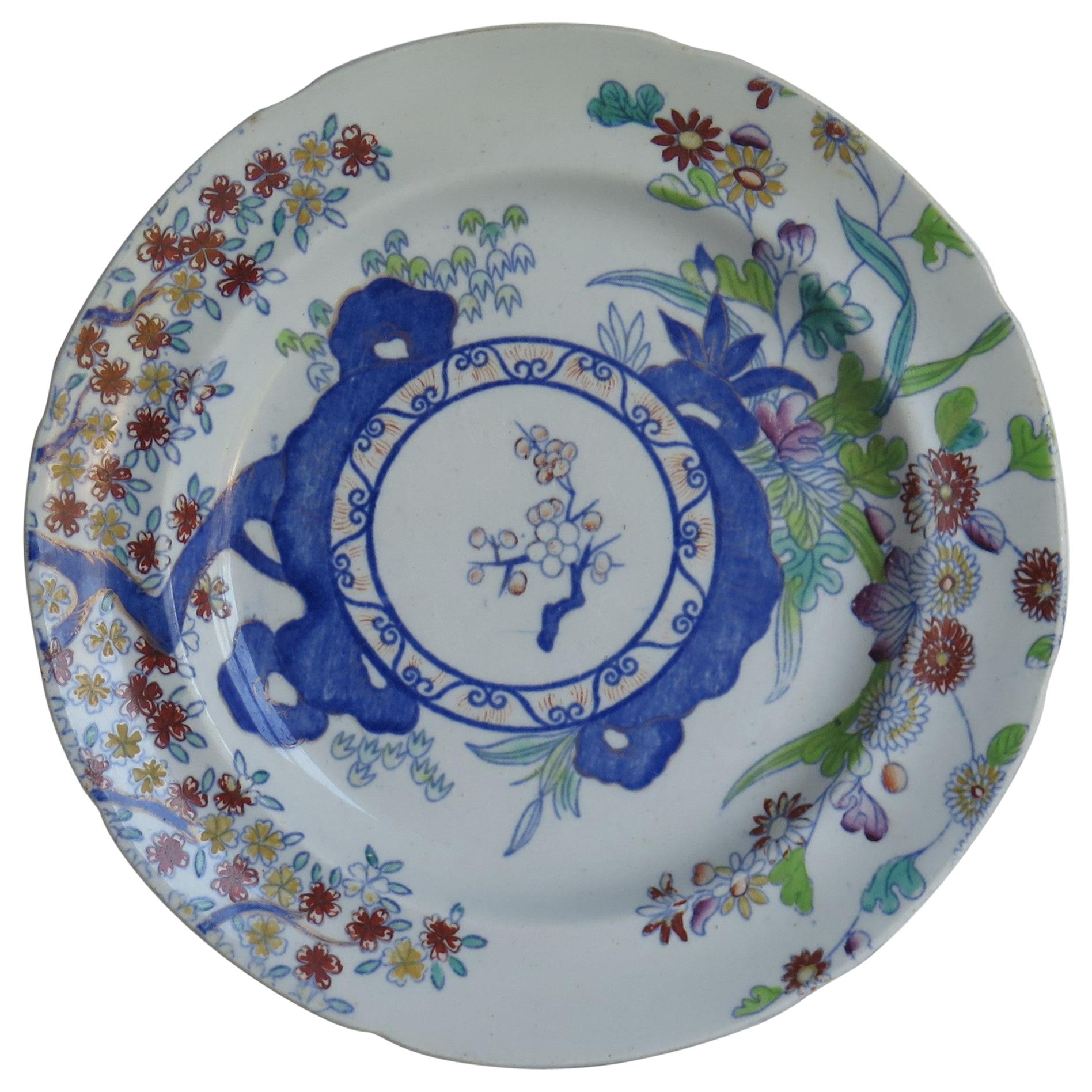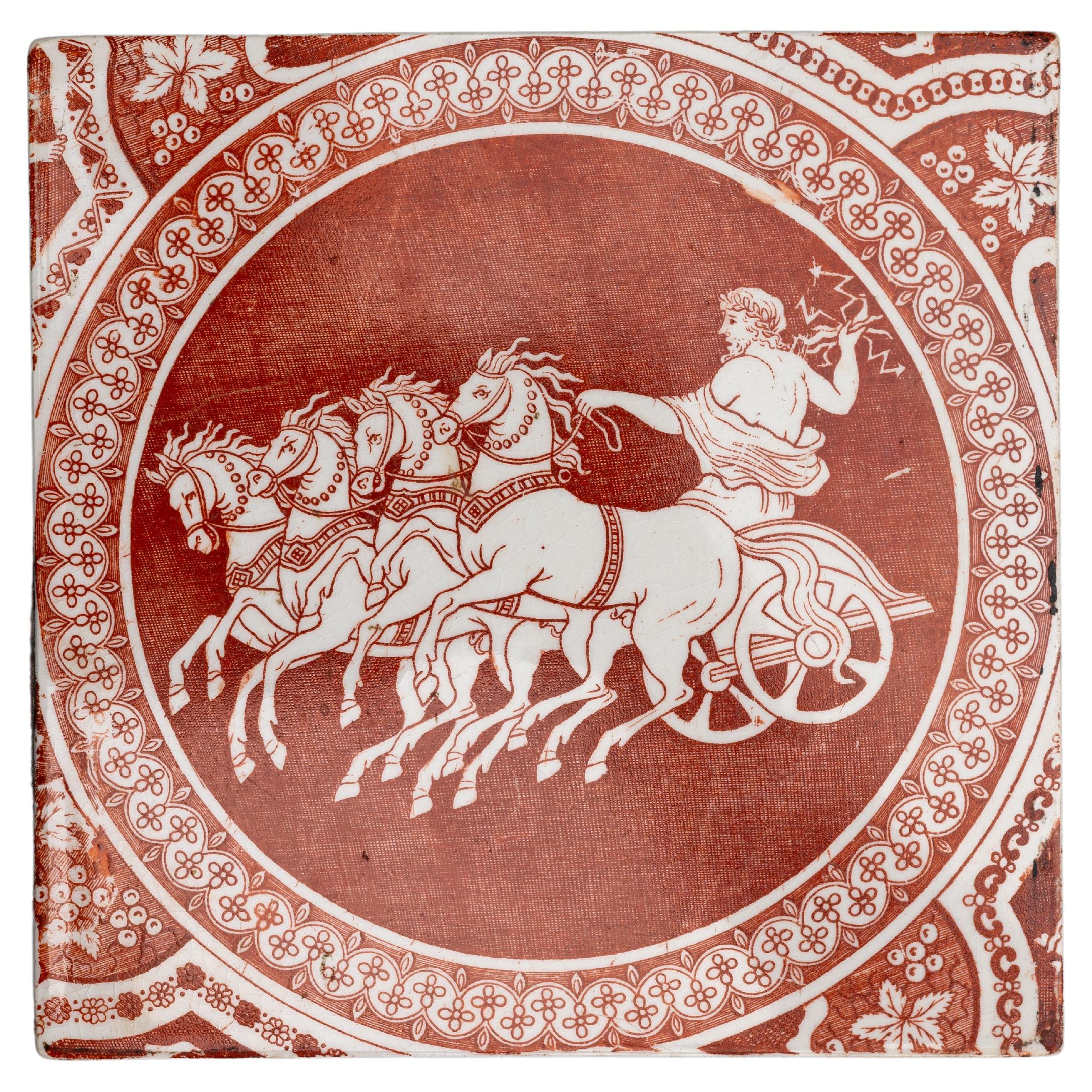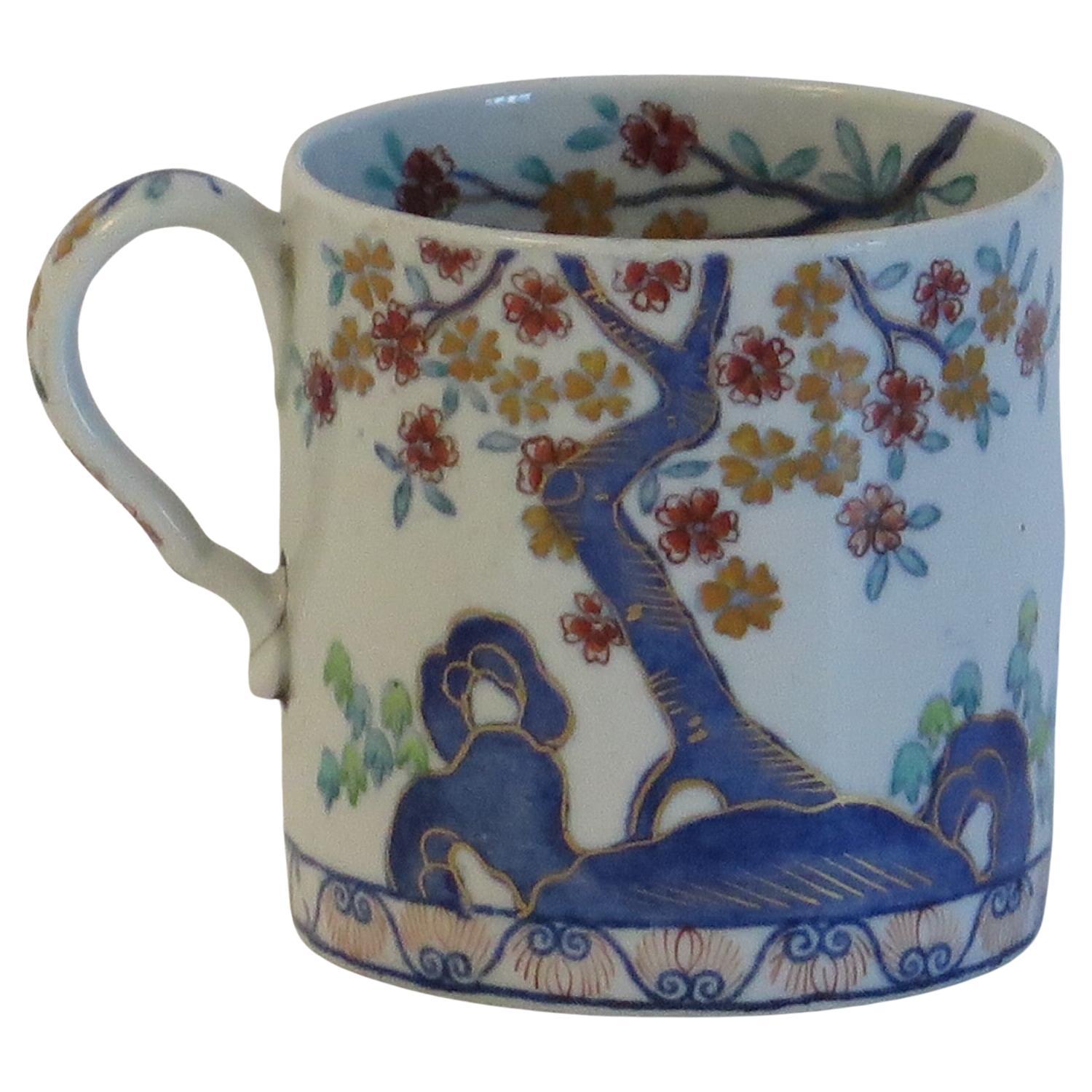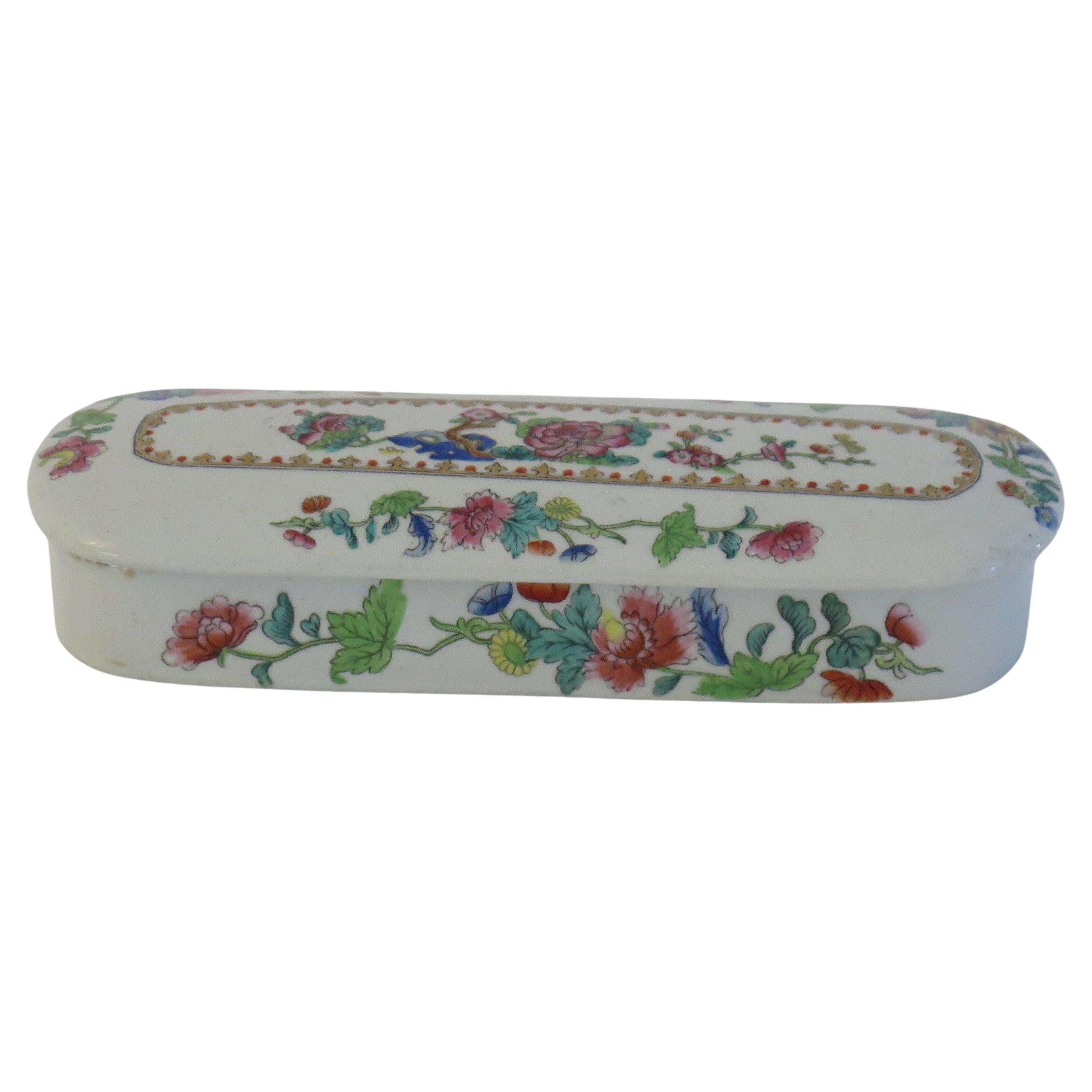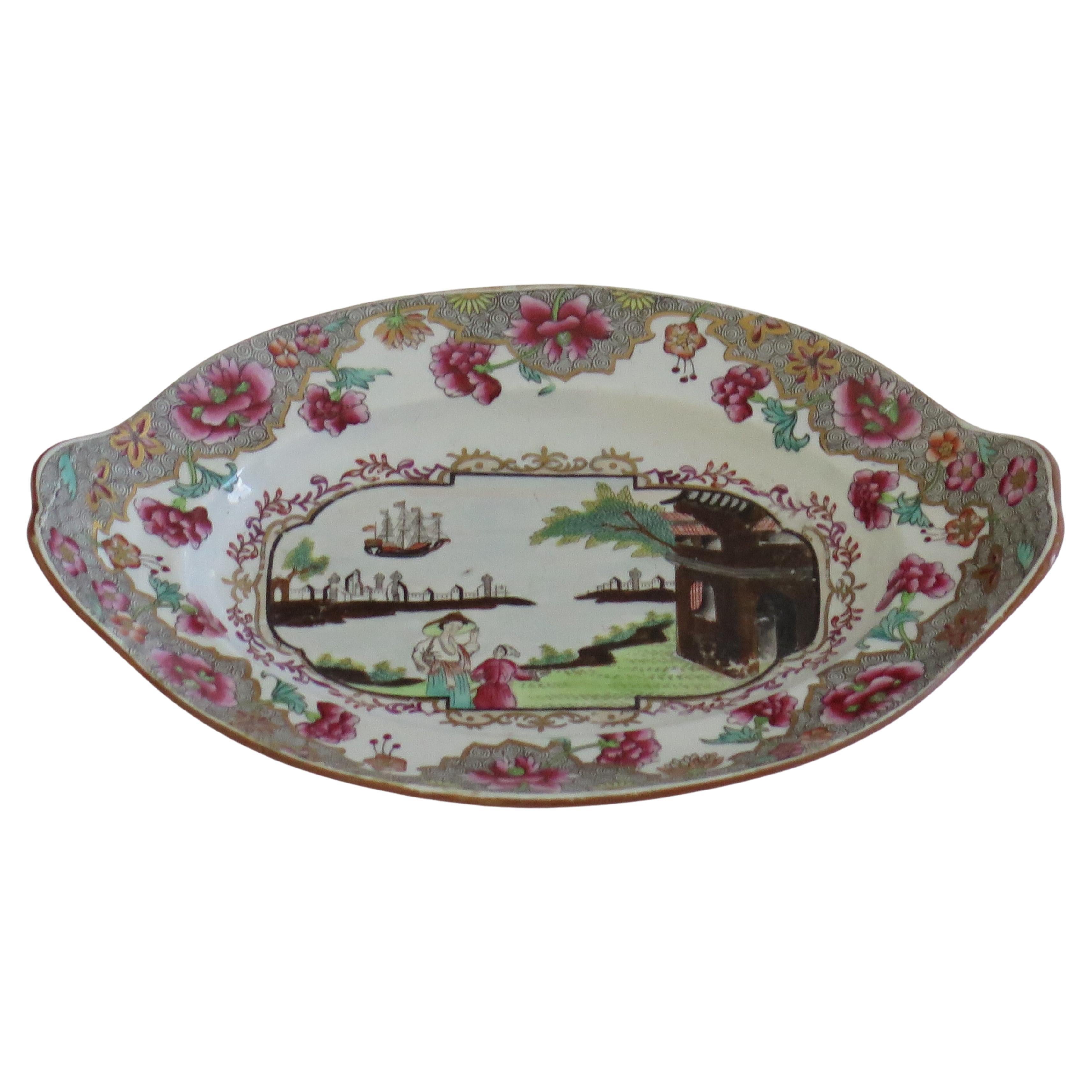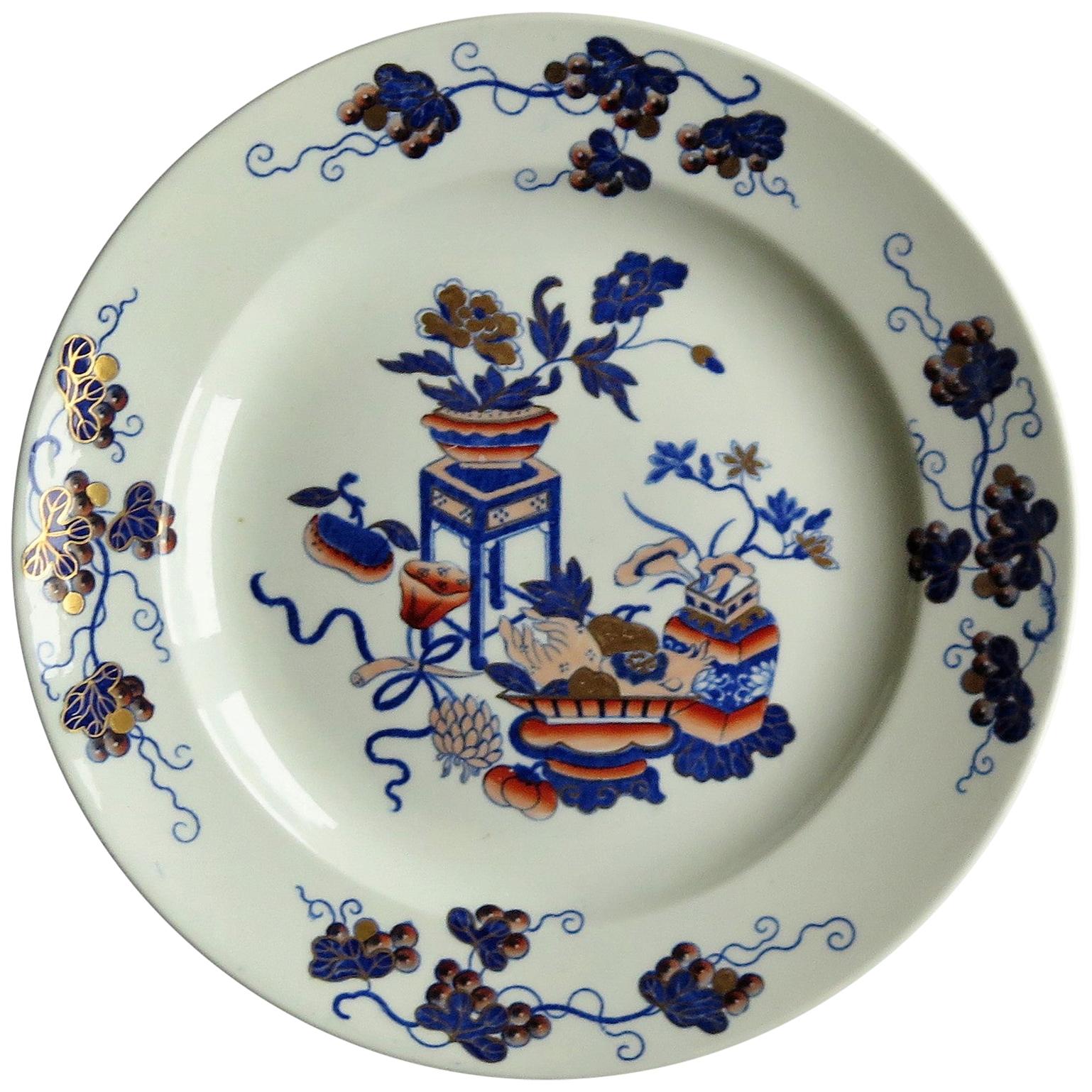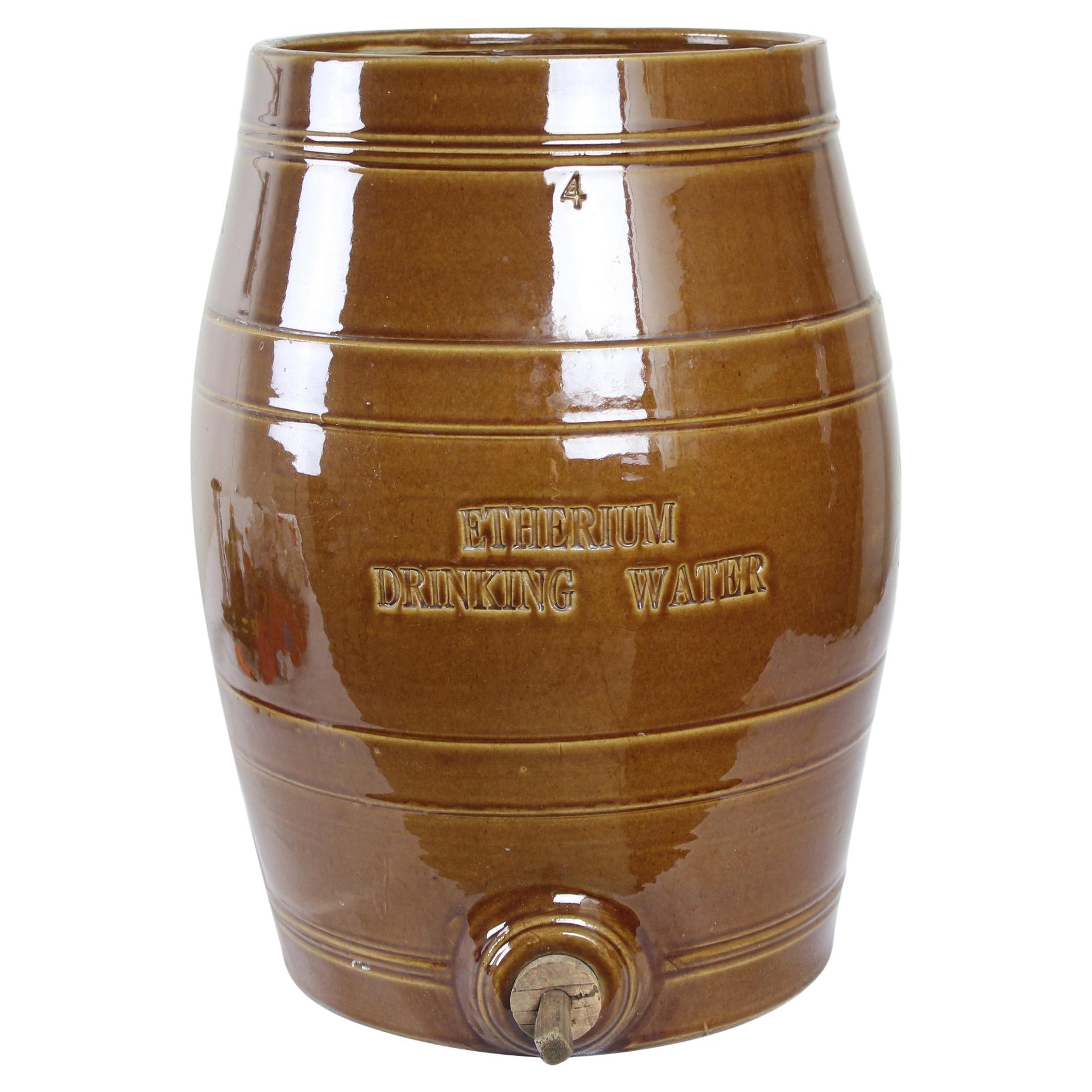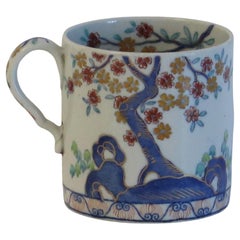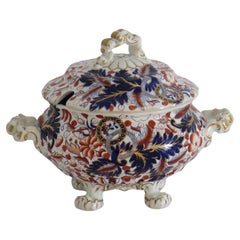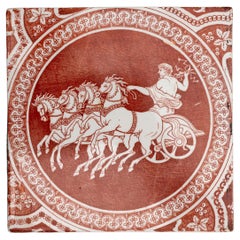
Spode & Copeland Stone China Trio in Tobacco Leaf Pattern No. 2061, 19th Century
View Similar Items
Spode & Copeland Stone China Trio in Tobacco Leaf Pattern No. 2061, 19th Century
About the Item
- Creator:Spode (Manufacturer)
- Dimensions:Height: 2.5 in (6.35 cm)Diameter: 5.2 in (13.21 cm)
- Sold As:Set of 3
- Style:Chinoiserie (Of the Period)
- Materials and Techniques:
- Place of Origin:
- Period:
- Date of Manufacture:19th Century
- Condition:Wear consistent with age and use. NO Restoration, NO Chips, NO Cracks. Please see images.
- Seller Location:Lincoln, GB
- Reference Number:Seller: P 20281stDibs: LU990331616102
Spode
Spode is one of the oldest and most distinguished of the great pottery companies of Staffordshire, the time-honored home of English ceramics. The firm’s blue and white bone china transferware is a timeless classic. Spode dishes compose the sort of elegant dinner service that most of us envision on a traditional holiday table.
The company was established in 1770 in Stoke-on-Trent by Josiah Spode, a friend and neighbor of another estimable English ceramist, Josiah Wedgwood. Spode was particularly known for two technical achievements in the firm’s early decades. The first was to develop a standard formula for the making of bone china — a type of porcelain (made with a mixture of bone ash, minerals and clay) that is dazzlingly white and so strong it can be used to create very thin translucent plates and vessels. The other was to perfect the making of transferware. That process involves the transfer of pictorial images inked on tissue paper — such as the garden scenery in the famous Willow dish patterns — onto ceramics that are then sealed with a glaze. In 1833, following the sudden death of Josiah Spode III, business partner W.T. Copeland took over the company and changed its name. Collectors regard Copeland-marked pieces as Spode china. The Spode brand was revived in 1970.
From the 1820s onward, Spode enjoyed tremendous success both in Britain and elsewhere owing to the beauty and vitality of its decorative imagery. By some counts, Spode created more than 40,000 patterns in the 19th century. Many favorite Spode patterns — among them Blue Italian, India Tree, Greek and Woodland — date to the company’s early years. Spode’s most popular pattern, Christmas Tree, was introduced in 1938. Prices for Spode china vary widely, based on the size of the service, its condition and the pattern. An antique dinner service for 12 people or more, in good repair and complete with cups and serving dishes, will generally cost between $10,000 and $20,000. Such Spode services become heirlooms — a proud and timeless addition to a family’s table. And as you will see on these pages, Spode’s rich and varied wares offer a visual feast in and of themselves.
- Plate by Copeland Late Spode in Japanese Kakiemon Pattern No. 2117, circa 1850By Copeland SpodeLocated in Lincoln, LincolnshireThis is a beautiful plate in the Japanese inspired Kakiemon pattern number 2117, produced by the Copeland - Late Spode factory and made of earthenware potte...Category
Antique Mid-19th Century English Chinoiserie Pottery
MaterialsPottery
$204 Sale Price33% Off - Georgian Spode Coffee Can Ironstone Kackiemon Pattern 2117, circa 1820By SpodeLocated in Lincoln, LincolnshireThis is a good stone China (Ironstone) coffee can made by the SPODE factory in the early 19th Century, circa 1820. The coffee can is well potted with cylindrical shape and a loop handle with the distinctive Spode kink to it. The piece is beautifully decorated with hand painted enamels in the chinoiserie Kakiemon style, pattern number 2117. It has the Spode Stone China blue printed...Category
Antique Early 19th Century English Georgian Ceramics
MaterialsIronstone
- Copeland & Garrett (Spode) Stone China Sauce Tureen in pattern 5519, circa 1840By Copeland & Garrett SpodeLocated in Lincoln, LincolnshireThis is a very good sauce tureen made of ironstone (Spode's Stone China) in Pattern No 5519, produced by the English, Copeland & Garrett - Spode factory in the 19th century, Circa 18...Category
Antique Mid-19th Century English Chinoiserie Ceramics
MaterialsIronstone
- Georgian Spode Pen Tray 0r Lidded Box Ironstone Willis Pattern 2147, circa 1810By SpodeLocated in Lincoln, LincolnshireThis is a good stone China (Ironstone) Pen Tray or Box with lid, made by the SPODE factory in the early 19th Century, circa 1810. This piece comprises a base and a lid both made fro...Category
Antique Early 19th Century English Georgian Ceramics
MaterialsIronstone
- Georgian Spode Stone China Sauce Tureen in Ship Pattern 3067, circa 1810By SpodeLocated in Lincoln, LincolnshireThis is a very good sauce tureen made of ironstone (Spode's Stone China) in the Ship Pattern, No 3067, produced by the English, Spode factory early in the 19th century, George 111rd Period. The piece is well potted with two side handles. The pattern is called the Ship pattern number 3067, the chinoiserie decoration being transfer printed under-glaze, then very carefully hand-painted in bold colored enamels with additional gold gilding over-glaze. As is usual with Spode ware the standard of hand painted detail is very high. A plate in this pattern is shown on page 54 of Steven Smith's book; "Spode and Copeland" published by Schiffer. The pattern is in the Chinese taste as produced by many of the English potteries of the time, to compete directly with the large import of Canton or Chinese Export porcelain from China. The piece has a mid brown edge similar to that often seen on Chinese plates. The piece is fully marked to the base, with the earlier Spode black printed Stone-China mark...Category
Antique Early 19th Century English Chinoiserie Ceramics
MaterialsIronstone
- Spode Stone China Small Serving Dish in Ship Pattern 3068, circa 1810By SpodeLocated in Lincoln, LincolnshireThis is a good small Serving Dish made of ironstone (Spode's Stone China) in the Ship Pattern, No 3068, produced by the English, Spode factory early in the 19th century, George 111rd Period. The pattern is called the Ship pattern number 3068, the chinoiserie decoration being transfer printed under-glaze, then very carefully hand painted in bold colored enamels with additional gilding over-glaze. As is usual with Spode ware the standard of hand painted detail is very high. A plate in this pattern is shown on page 54 of Steven Smith's book; "Spode and Copeland" published by Schiffer. The pattern is in the Chinese taste as produced by many of the English potteries of the time, to compete directly with the large import of Canton or Chinese Export porcelain from China. The dish has a mid brown edge similar to that often seen on Chinese plates. It is fully marked to the base, with the earlier Spode black printed Stone-China mark...Category
Antique Early 19th Century English Chinoiserie Ceramics
MaterialsIronstone
- Early 19th Century Spode Red Greek Pattern TileBy Josiah Spode, SpodeLocated in Fort Lauderdale, FLA Neoclassical red transferware tile made by Spode 1806-1810, with the ‘Zeus in His Chariot’ pattern. Sir William Hamilton’s Collection of Etruscan, Greek and Roman antiquities, first published in 1766 by Pierre d’Hancarville, was a landmark publication in English design. It intended to disseminate the Antique style through its engravings of Attic pottery. The catalog’s faithful reproductions of Classical vases led British potteries, including Spode, to adapt or even copy the ancient art for modern life. These Spode Greek pattern tiles reflect the major influence of Hamilton’s catalog on English Neoclassicism. The central scene was taken directly from the catalog. This tile can be dated to a narrow window of production in the Spode factory, 1806-1810. During that time, Spode used a technique known as the “Pluck and Dust” method to print in red transfer designs onto creamware. Using this method, source prints were transferred overglaze using tissue imprinted with a very faint rendition of the design outlined in sticky oil. The decorator applied the tissue to the object then carefully “plucked” or pulled it away, leaving the sticky oil design behind. Then, a finely-ground enamel color was “dusted” onto the surface, sticking to any areas that had the oil. A final firing at a low temperature in the enamel kiln made the pattern permanent. The Pluck and Dust technique improved upon bat-printing and enabled larger designers to be transferred. It was short-lived, however, as under-glaze transfer printing soon took over as the preferred method for producing transferwares. Dimensions: 5 in. x 5 in. x 1/4 in. Condition: Excellent. Provenance: The Collection of Nancy and Andrew Ramage Jonathan Horne...Category
Antique Early 19th Century English Neoclassical Pottery
MaterialsEarthenware, Creamware
- 19th Century Etherium Water CrockLocated in Port Chester, NYThis type of crock is quite rare in the 4 gallon form. An unusual piece of history, the piece was used to dispense ether diluted in water. On the front of the crock can be seen the words "Etherium Drinking Water". Dating from the later part of the 19th Century, this piece is in good condition except for two small chips on the rim, pictured. Nicely glazed with a wooden tap, this piece would be an attractive kitchen decoration.Category
Antique Late 19th Century English Pottery
MaterialsPottery
- Early 19th Century Pearlware Chestnut BasketLocated in Pasadena, CAThis is a good example of a very early 19th century Pearlware Chestnut Basket in the "Blue Willow" transfer pattern. Creamware was invented during the second half of the 18th century and reached its height of popularity c.1810. Chestnut baskets were common serving pieces in 18th and 19th century households. Period antique Chestnut basket...Category
Antique Early 19th Century English Regency Ceramics
MaterialsClay
- 19th Century French Terracotta Confit PotLocated in Winter Park, FLA 19th century earthenware confit pot from the Southwest of France with traditional yellow ochre glaze. Chips, cracks and losses to glaze. These ordinary earthenware vessels were onc...Category
Antique Late 19th Century French French Provincial Pottery
MaterialsTerracotta
- 19th Century French Terracotta Confit PotLocated in Winter Park, FLA 19th century earthenware confit pot from the Southwest of France with traditional yellow glaze. Chips, cracks and losses to glaze. Large hole in bottom. These ordinary earthenware ...Category
Antique Late 19th Century French French Provincial Pottery
MaterialsTerracotta
- 19th Century French Terracotta Confit PotLocated in Winter Park, FLA 19th century earthenware confit pot from the Southwest of France with traditional yellow glaze. Chips, cracks and losses to glaze. These ordinary earthenware vessels were once used...Category
Antique Late 19th Century French French Provincial Pottery
MaterialsTerracotta

